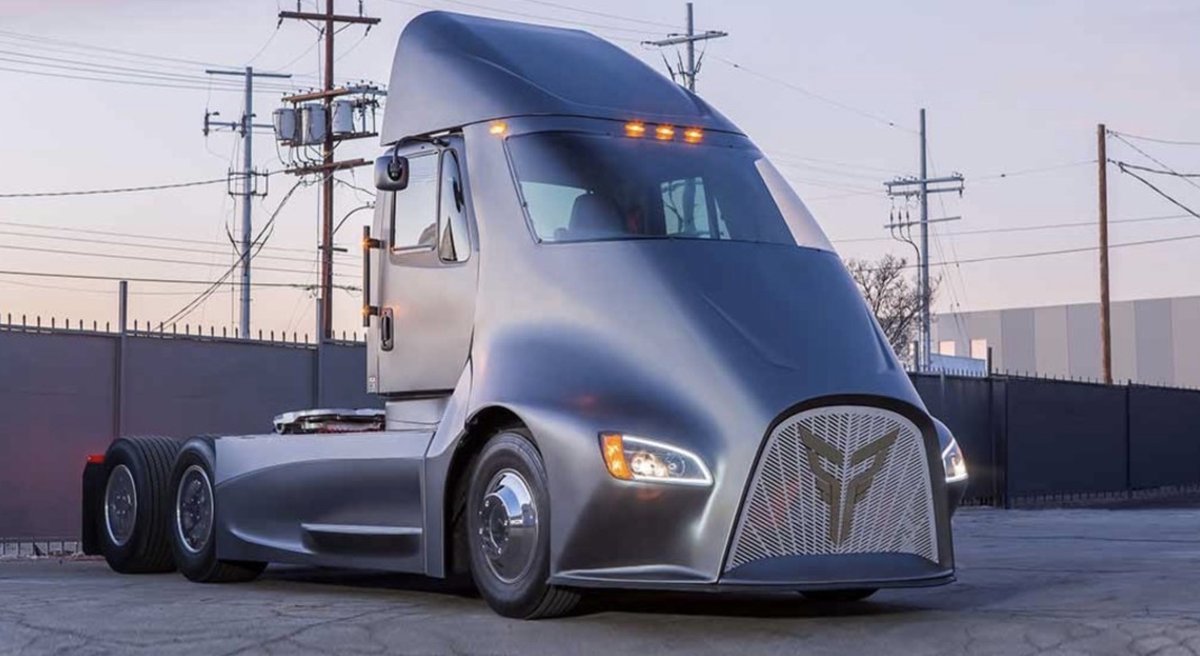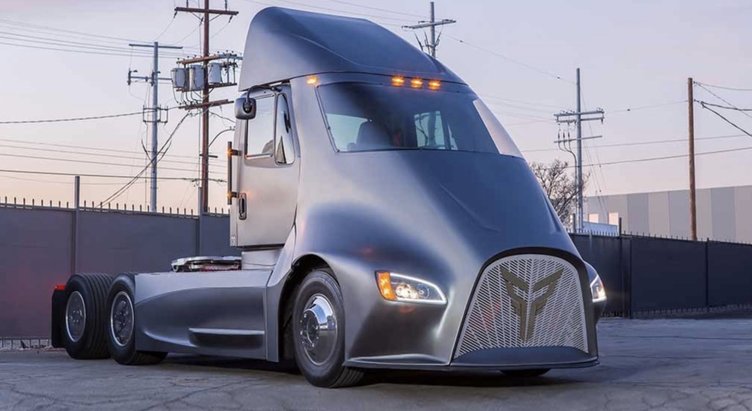Drive north from Lathrop to Stockton on Interstate 5 and you’ll pass more than a few semi-truck dealerships.
It underscores one undeniable truth.
Trucking is a big employer in San Joaquin County.
Since the dealerships cater almost exclusively to the small guys there are a lot of independent truckers in Manteca, Lathrop, and nearby.
And judging by the strength of the logistics and trucking economy in the South County that with two major rail-to-track facilities including one tripling in size, this is a good time to be in the trucking industry.
So why is the National Automobile Dealers Association reporting semi-truck sales plunged 50 percent in June compared to the same month in 2033.
The culprit?
California’s aggressive green policies that ignore how rapidly technology isn’t evolving and the significant current extra costs of zero emissions.
The state’s Advanced Clean Fleets rule imposed earlier this year states “dealers are restricted from selling a diesel truck unless they can sell a ZEV (zero emissions vehicle) truck.”
No problem, right?
Truckers can just buy the electric semis.
But there are more than a few insurmountable obstacles for independents and small trucking firms.
EV trucks have a limited range, on average, of 150 miles compared to 1,000 and 1,500 miles for diesel trucks.
There is a significant dearth of charging stations for EV semis.
Despite a $40,000 federal tax credit, the upfront cost of buying an electric semi is still significantly more than a diesel semi.
Consider an analysis conducted last month by 4D Trucking & Logistics,
They determined, on average, the five-year cost of owning a diesel truck is $210,000 to $235,000.
It includes an average $135,000 upfront cost to buy the semi plus $75,000 to $100,000 for maintenance costs.
That compares to $406,000 to $425,000 for a ZEV truck.
It includes an average of $350,000 in upfront costs to buy the semi plus $56,250 to $75,000 for maintenance costs.
It’s $200,000 more over a 5-year period to own and operate an EV semi.
That’s just part of the equation.
Based on current electricity costs nationally, the analysis shows electric cost about $1 per mile to operate. Rest assured if you charge in PG&E territory, a $1 per mile is wishful thinking.
Diesel prices currently reflect the equivalent of 67 cents a mile to operate. That’s roughly a third less than an EV powered by electricity.
Battery replacement is expensive. If they fail, they are $100,000 to $150,000 to replace.
However, many manufacturers offer warranties on batteries of up to a million miles.
Then there are those pesky charging stations that need to be less than150 miles apart. They can cost $20,000 to $100,000 a station to install.
Do not misunderstand.
The trucking sector accounts for 40 percent of all greenhouse gas emissions in California.
The end of the road for fossil fuel is coming eventually as there is a finite supply.
That said, all of this has a cost.
And when you try to force an edict ahead of the technology and not allowing market dynamics to work, you create hyper green-inflation.
There was a time when California air quality bureaucrats allowed common sense and reality to dictate “rules.”
The implementation of the ban on two-stroke yard care engines — by far the worst emitters of pollution given they are sans carburetor — was pushed back until technology and the market caught up.
Make no mistake it, the green rush is going to leave economic devastation in its wake the way the California Gold Rush left environmental destruction in its wake.
Given trucks at one point transport everything — whether it is the finished products we buy or the material to produce them — the $200,000 or so extra it costs to operate a ZEV truck is going to impact everyone.
Toss in the mandate for zero polluting vehicles, the push to replace all power generation even from nuclear power to wind and solar, and banning natural gas heating in new homes after 2030 along with phasing out natural gas powered water heaters and appliances, the bottom line is going to be huge for the individual household.
It was always going to be costly.
But forced mandates until the technology is revved up to keep unit costs down super inflates the cost.
It’s kind of ironic that we have a national debate on things such as tariffs that will end apropos five days after Halloween that by far ranks as the second scariest day on the calendar after Election Day.
Tariffs are decried because they force consumers to spend more on domestic products by making less expensive imports more costly than what is manufactured in the United States.
The same people who shed crocodile tears for consumers when an opponent mentions slapping tariffs on specific imports are all in on forcing the same consumers to pay through the nose for green policies.
Each is an example of government policy that jacks up the price of goods.
Each is being pursued for the “common good” whether it is protecting American manufacturing and jobs or reducing greenhouse gas emissions.
I know, I know.
Greenhouse gas emissions will destroy earth as we know it.
But is the “chosen” solution by government edicts greased by lobbying dollars and myopic climate protestors laser focused on specific technologies, the right solution for the transportation sector?
It is only because the way zero emissions rules have been written.
In reality, somewhere in the process there are going to be emissions of some measurable degree.
Hydrogen, that wasn’t the winning horse preordained by Sacramento that is wagging the dog called “Federal Government”, has other environmental pluses that EVs lack.
For one, methane gas that is a byproduct of treating human waste and is burned off into the atmosphere, can be converted into compressed natural gas to power vehicles.
Eventually, California wants nothing but ZEV semis on the road.
But how it is getting there by the one EV semi must be sold before a dealer can sell a new diesel semi that burns cleaner than many diesel trucks on the road means trucks that pollute at a higher level will be on the road longer.
Tariffs will indeed make some things more expensive to achieve a government goal.
Green mandates, however, as they are currently unfolding on the trucking industry will make everything more expensive to achieve a government goal.
This column is the opinion of editor, Dennis Wyatt, and does not necessarily represent the opinions of The Bulletin or 209 Multimedia. He can be reached at dwyatt@mantecabulletin.com





